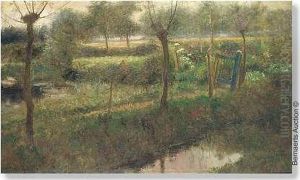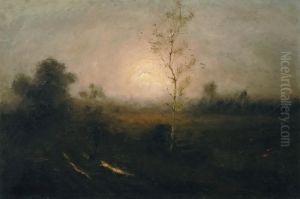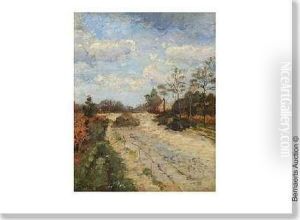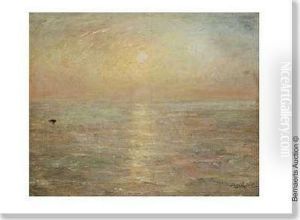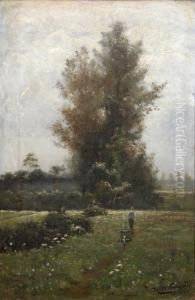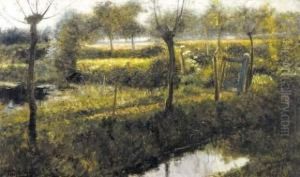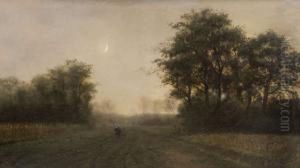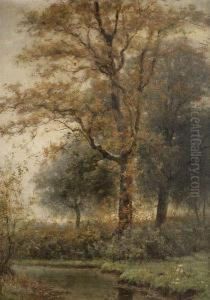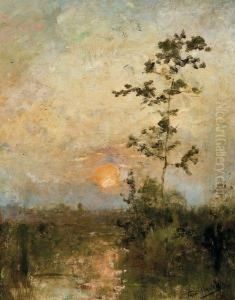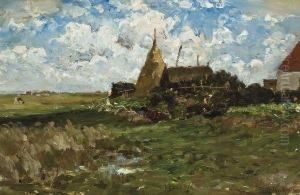Theodoor Verstraete Paintings
Theodoor Verstraete was a notable Belgian painter, born in 1850 in Ghent and passed away in 1907. He was a prominent figure in the art movement known as the 'Barbizon School' in Belgium, which emphasized naturalism and a return to nature. This movement was inspired by the French Barbizon school, which sought to capture rural life and landscapes through a realistic lens. Verstraete's work is characterized by its detailed depiction of the Flemish countryside, often highlighting the beauty and simplicity of agricultural life.
Verstraete received his initial art education in Antwerp, where he was deeply influenced by the rural subjects and the emphasis on naturalism. His early works were marked by a strong emotional depth and a fine attention to the nuances of light and shadow, which would become a hallmark of his style. Throughout his career, Verstraete remained deeply connected to the Flemish countryside, drawing inspiration from its landscapes, seasons, and the daily lives of its inhabitants.
Unlike many of his contemporaries, Verstraete's work did not focus solely on the picturesque aspects of rural life but also touched upon the hardships and realities faced by the agricultural community. This dual focus helped him to create deeply resonant and socially aware art that was both beautiful and thought-provoking. His paintings often featured the toils of peasant life, set against the backdrop of the expansive and sometimes unforgiving Flemish landscape.
In addition to his paintings, Verstraete was also known for his etchings and drawings, which similarly reflected his interest in the natural world and the human condition within it. His mastery of different mediums demonstrated his versatility as an artist and his commitment to exploring his themes in depth.
The legacy of Theodoor Verstraete is marked by his significant contribution to Belgian realism and his influence on subsequent generations of artists. His work remains celebrated for its heartfelt portrayal of rural life, its technical prowess, and its ability to convey the beauty and complexity of the natural world. Today, his paintings can be found in various museums and collections, continuing to inspire and move viewers with their timeless appeal.
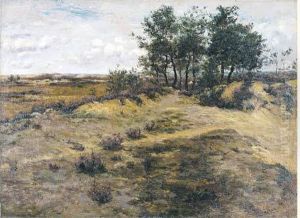
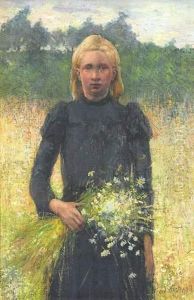
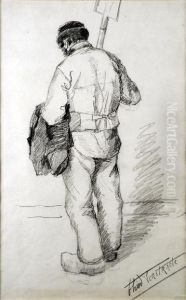
![[bord D'etang]](https://www.niceartgallery.com/imgs/1674168/s/theodoor-verstraete-bord-detang-37448864.jpg)
